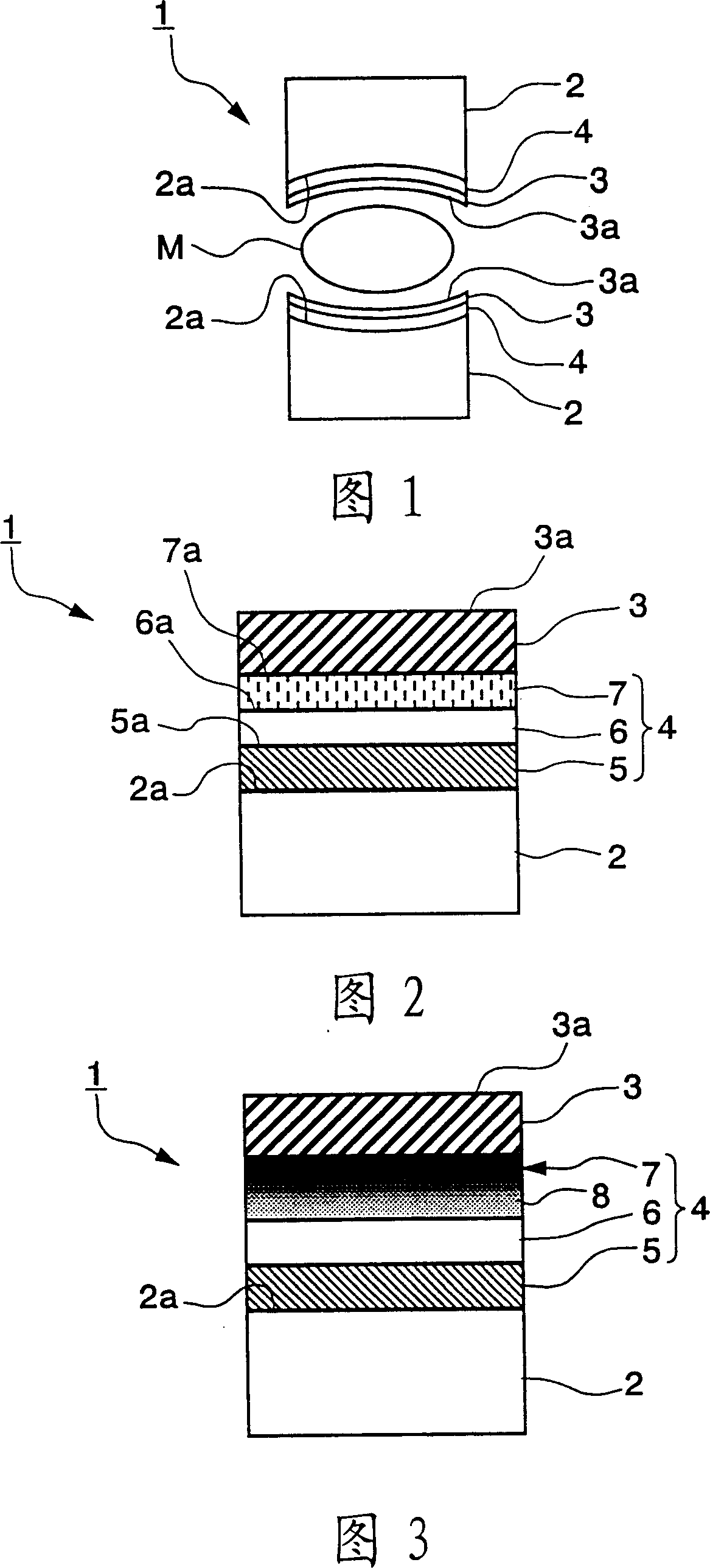Mould for forming optical elements and the optical elements
A technology of optical components and molds, which is applied in the field of optical components, can solve the problems of increased roughness of the forming surface, uneven crystal growth, etc., and achieve the effect of preventing welding
- Summary
- Abstract
- Description
- Claims
- Application Information
AI Technical Summary
Problems solved by technology
Method used
Image
Examples
Embodiment Construction
[0037] 1, 2 show a first embodiment of the present invention. The mold for forming an optical element in this embodiment is a mold for producing a convex lens (optical element) by press molding. As shown in FIG. 1, the mold 1 for forming such an optical element has the following parts: a pair of mold base materials 2, 2; formed on the surface 2a of each mold base material 2, with The surface layer 3 of the molding surface 3 a which the glass raw material M contacts; and the intermediate layer 4 formed between the two mold base materials 2 and the surface layer 3 .
[0038] The mold base material 2 is made of sintered cemented carbide or silicon carbide, and its surface 2a is made into a concave shape matching the curvature radius of the convex lens.
[0039] As shown in FIG. 2 , the intermediate layer 4 is composed of a base material surface layer 5 , a metal layer 6 and a nitride layer 7 . The base material surface layer 5 is in contact with the surface 2 a of the mold base...
PUM
| Property | Measurement | Unit |
|---|---|---|
| diameter | aaaaa | aaaaa |
Abstract
Description
Claims
Application Information
 Login to View More
Login to View More - R&D
- Intellectual Property
- Life Sciences
- Materials
- Tech Scout
- Unparalleled Data Quality
- Higher Quality Content
- 60% Fewer Hallucinations
Browse by: Latest US Patents, China's latest patents, Technical Efficacy Thesaurus, Application Domain, Technology Topic, Popular Technical Reports.
© 2025 PatSnap. All rights reserved.Legal|Privacy policy|Modern Slavery Act Transparency Statement|Sitemap|About US| Contact US: help@patsnap.com

